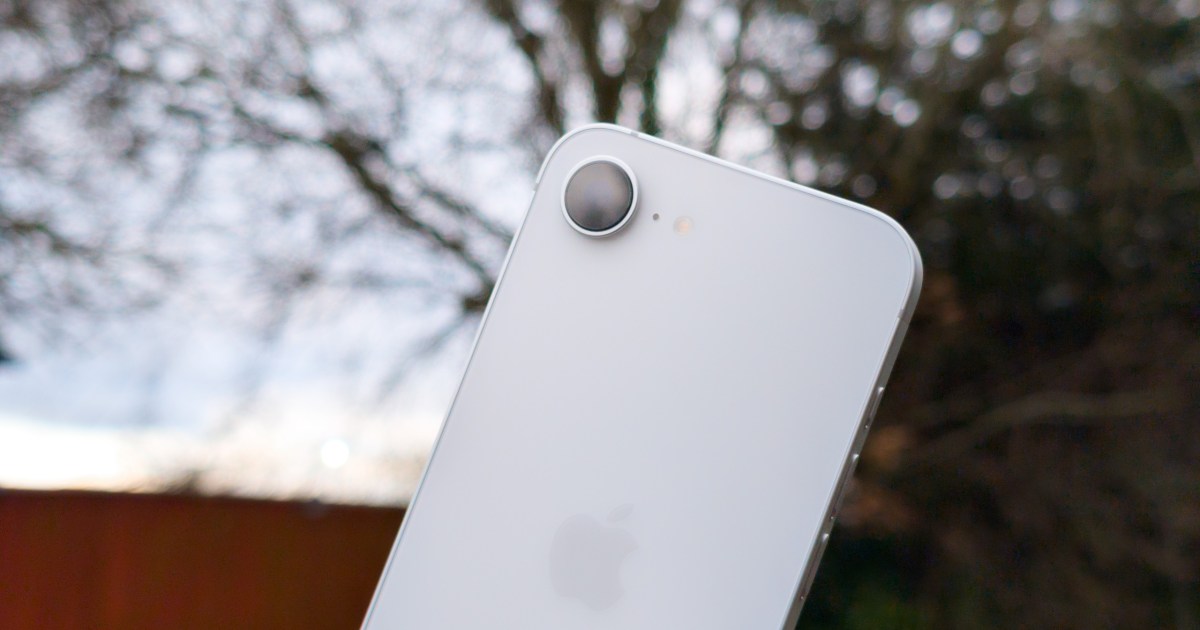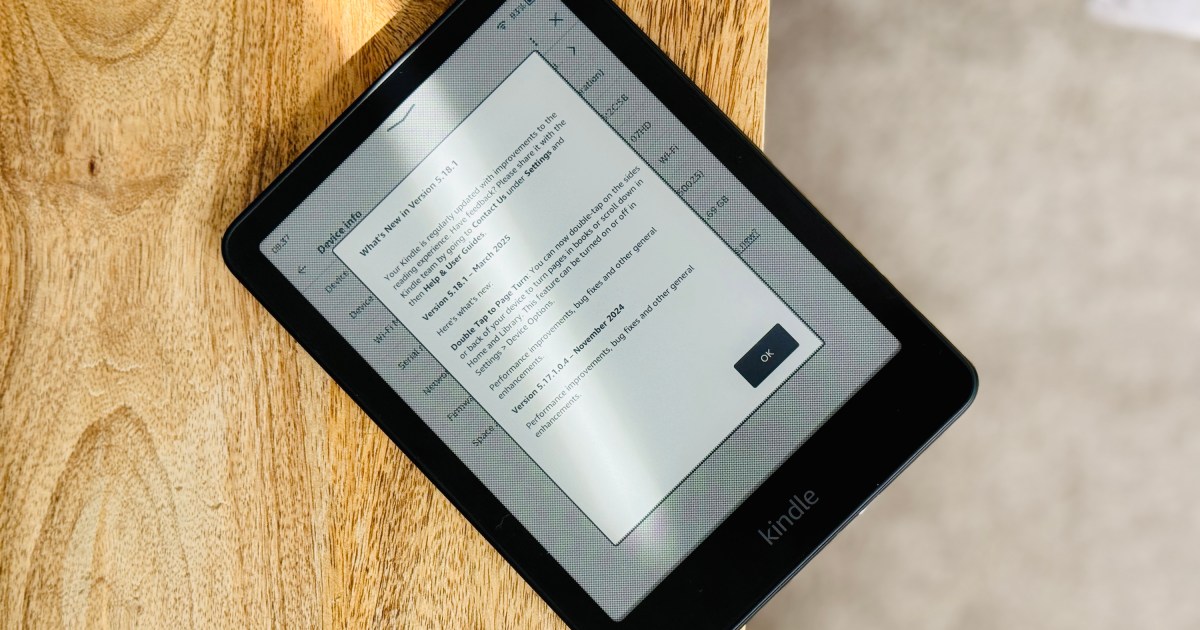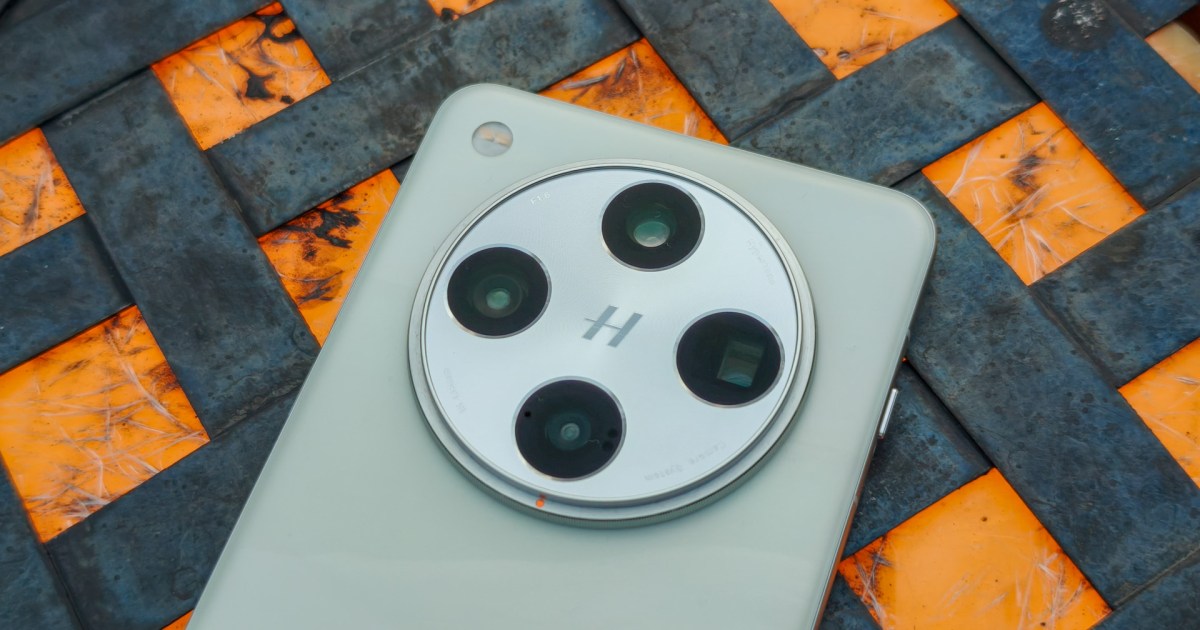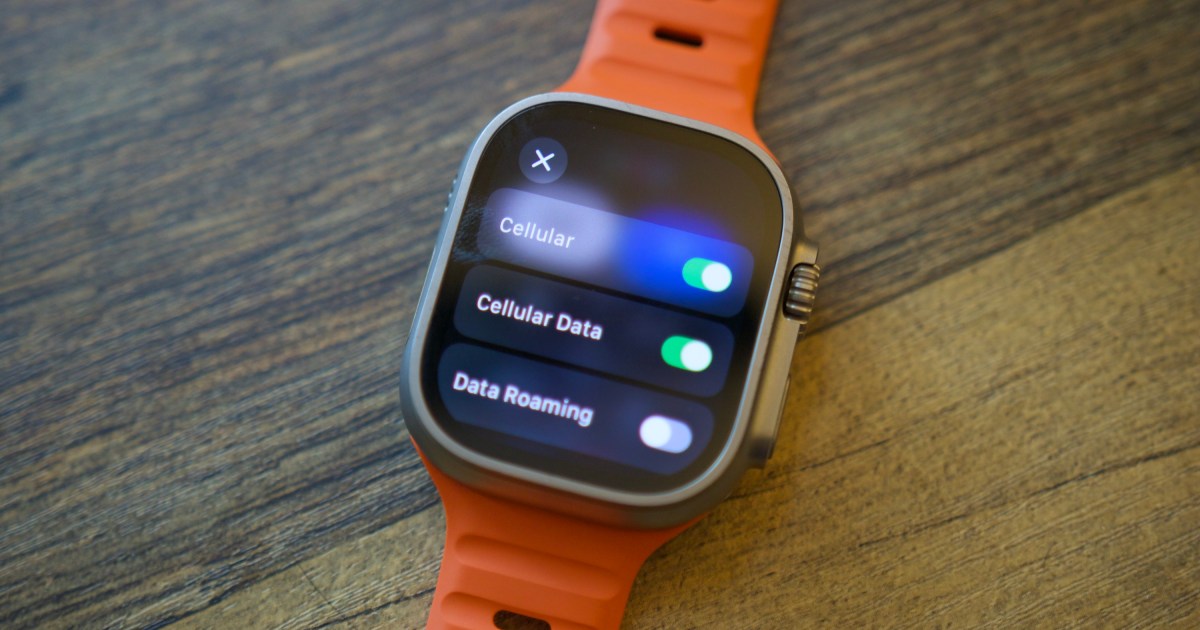Apple’s recent unveiling of the iPhone 16e sparked considerable interest, particularly regarding its in-house C1 modem. This marked a significant shift for Apple, transitioning away from Qualcomm modems. Early performance comparisons have raised questions about the C1’s competitiveness. However, recent testing suggests Apple’s new modem might be more capable than initially thought.
Ookla, a leading internet speed testing platform, conducted a two-week analysis of the C1 modem’s performance across AT&T, Verizon, and T-Mobile networks. The results reveal some surprising advantages for Apple’s in-house solution, especially in challenging network conditions.
C1 Modem Excels in Low Connectivity Environments
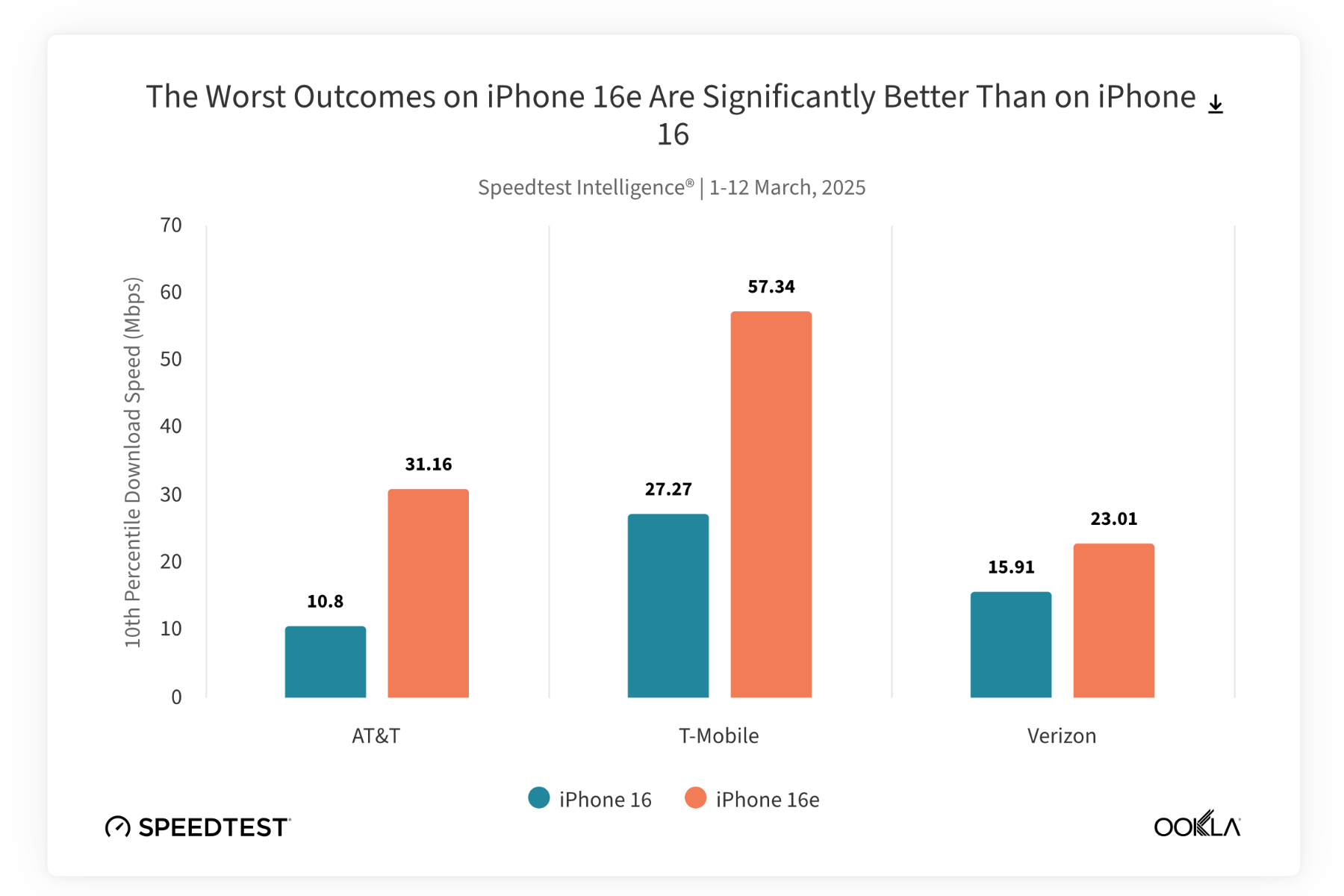
Ookla’s testing revealed that the iPhone 16e, powered by the C1 modem, consistently outperformed the Qualcomm-equipped iPhone 16 in low connectivity scenarios (bottom 10th percentile). Across all three carriers, the C1 modem delivered superior download speeds in these challenging environments. Specifically, on T-Mobile, the iPhone 16e achieved download speeds of 57.34 Mbps, while the iPhone 16 lagged behind at 27.27 Mbps. Even in higher connectivity scenarios, the C1 modem maintained respectable performance, reaching peak download speeds between 140-264 Mbps, sufficient for common tasks like social media, streaming, and cloud gaming. While the Qualcomm modem boasts faster peak download speeds due to mmWave 5G support, Ookla emphasizes the importance of lower percentile performance in reflecting real-world user experience.
“Performance at the lowest 10th percentile often provides a more accurate reflection of overall quality of experience (QoE) than the fastest 90th percentile,” the report explains, noting that mmWave deployments and diminishing returns can skew high-end results.
Superior Upload Speeds with the C1 Modem
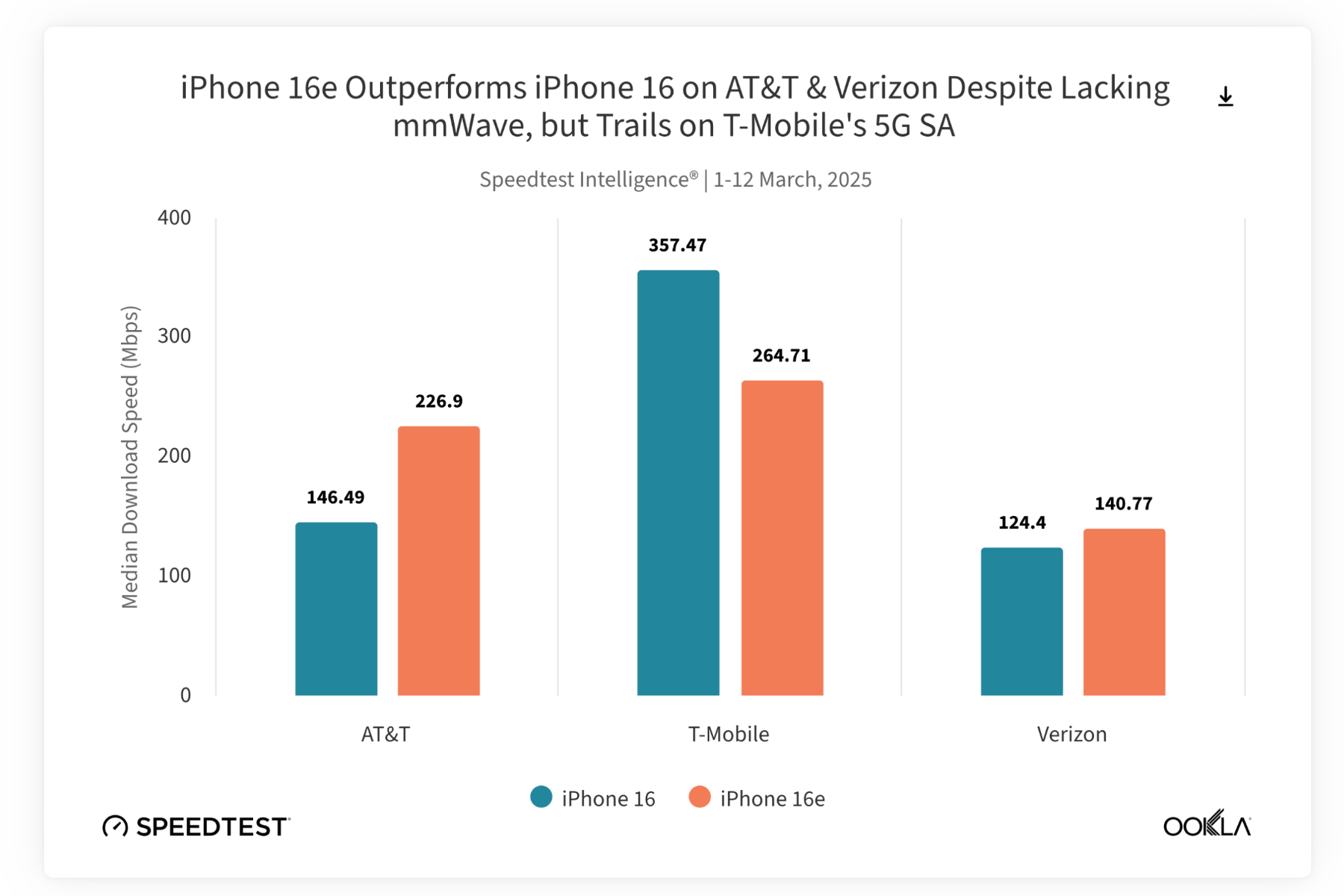
Beyond download speeds, the C1 modem demonstrated a significant advantage in upload performance. On both Verizon and AT&T networks, the iPhone 16e consistently outpaced the iPhone 16 in upload speeds, achieving up to a 38% improvement. This is particularly noteworthy given that Qualcomm’s modem offers superior downlink carrier aggregation. Furthermore, despite lacking uplink carrier aggregation technology, Apple’s C1 modem still managed to deliver faster upload speeds.
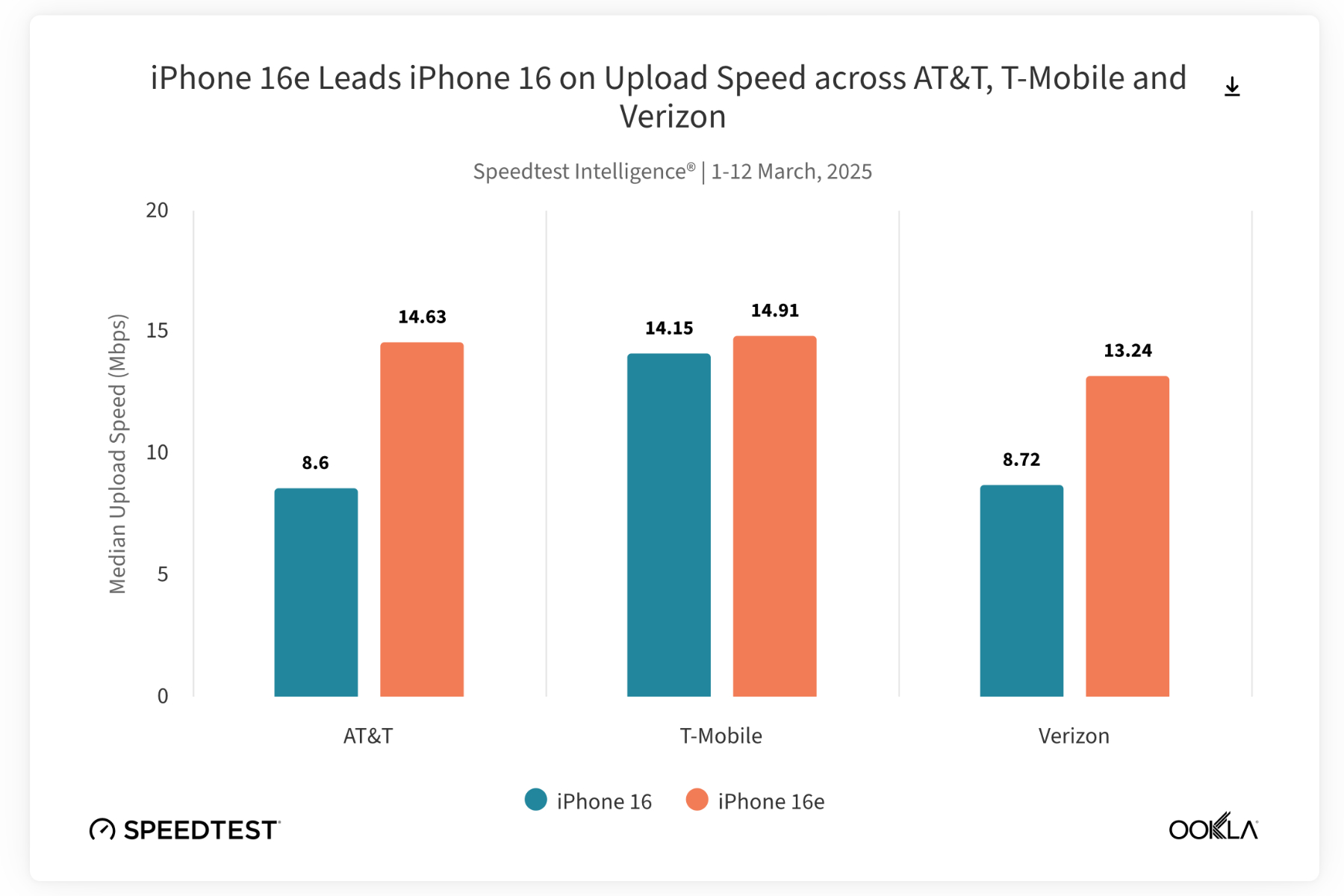
Independent testing also suggests the C1 modem is more energy-efficient than Qualcomm’s offering, potentially contributing to improved battery life. The smaller size of the C1 modem likely allowed Apple to incorporate a larger battery in the iPhone 16e compared to the more expensive iPhone 16 models.
These initial findings indicate that Apple’s C1 modem is a strong contender, offering superior performance in key areas like low connectivity download speeds and overall upload speeds. While Qualcomm’s modem retains an edge in peak download speeds due to mmWave support, the C1 modem’s strengths in real-world scenarios and its energy efficiency suggest a promising future for Apple’s in-house modem technology.



